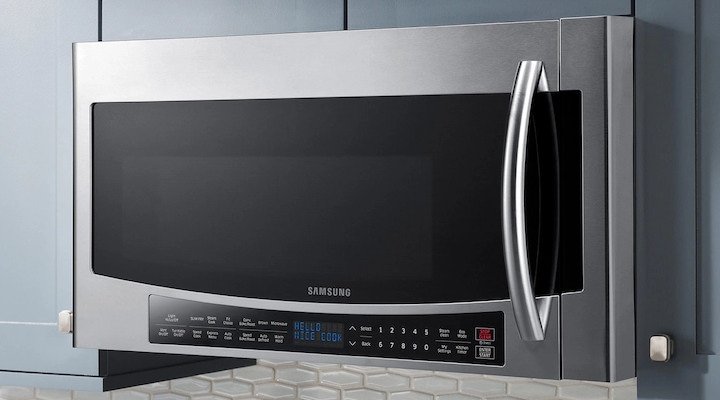
So, what’s going on here? In simple terms, the F2 error code is Samsung’s way of letting you know something’s amiss with the microwave’s temperature sensor or its circuitry. Think of it as a way your microwave is trying to communicate with you—like a car’s dashboard warning light telling you something needs attention. Understanding what this code signifies and how to resolve it can save you time, potential repair costs, and even prevent further damage to your appliance.
Understanding the F2 Error Code
When your Samsung microwave displays the F2 error code, it’s essentially alerting you to an issue related to the temperature sensor within the appliance. This sensor is a crucial component; it monitors the temperature inside the microwave and ensures it heats your food evenly and safely. If it detects abnormal conditions, or if there’s a problem with the sensor itself, it triggers the F2 code to prevent any potential overheating or malfunction.
Here’s the deal: think of this sensor as the “thermometer” for your microwave. Just like how you might use a thermometer to check if someone has a fever, this sensor keeps an eye on the microwave’s “health.” If it’s not reporting accurately, the microwave interprets that as a problem—much like if a thermometer wasn’t giving the right reading, you’d assume something’s up.
Most commonly, the F2 error is caused by a faulty or failing temperature sensor. Sometimes, the sensor might be dirty or obstructed, causing it to send incorrect readings. In other cases, there might be a loose connection or a wiring issue affecting the sensor’s functionality. Understanding these causes helps you decide how to proceed with troubleshooting and repair.
Steps to Troubleshoot the F2 Error Code
Now that you know why the F2 code pops up, let’s explore how you can address it. Here’s a simple step-by-step guide to help you troubleshoot this issue, even if you’re not particularly tech-savvy.
Firstly, unplug your microwave from the power source. This is not just a safety precaution—it’s also a way to reset your appliance, similar to rebooting a computer. After waiting a few minutes, plug it back in to see if the error goes away. Sometimes, a simple reset can solve minor glitches.
If the reset doesn’t work, take a closer look at the sensor itself. You might need to consult your manual to locate it, but typically, it’s a small, not easily noticeable component. Check for any visible signs of damage, dirt, or dislodgment. If it’s accessible, gently clean it with a soft cloth to remove any debris—just like wiping dust off your glasses to see better.
If things still aren’t resolved after these basic checks, the problem might be deeper, like faulty wiring or a defective sensor needing replacement. At this point, consulting a professional technician is wise, as they have the right tools and expertise to diagnose and fix these internal issues.
Preventive Measures and Tips
Prevention is better than cure, right? Keeping your microwave in good condition can help avoid encountering pesky error codes like F2 in the first place. Here are some practical tips to keep your appliance running smoothly.
Regular maintenance is key. Make it a habit to clean your microwave routinely. Ensure that no food particles, grease, or debris are blocking the components, especially around the temperature sensor. You wouldn’t drive a car with mud on the windshield, so why operate a microwave that’s not clean?
Next, handle your microwave with care. Avoid slamming the door or placing heavy objects on it, as this can affect the internal components and sensors. Consider it similar to handling a delicate piece of equipment—gentle usage extends its life.
Finally, keep an eye on how your microwave operates. If you notice it’s taking longer to heat food or if it has uneven heating patterns, address these issues promptly. Early detection is your best defense against more significant problems.
In conclusion, understanding what the F2 error code means and knowing how to respond can save you from inconvenience and potential repair bills. Armed with this knowledge, you can confidently tackle this error code and ensure your Samsung microwave remains in tip-top shape. Remember, a well-maintained microwave isn’t just an appliance; it’s a kitchen companion that serves you well day in and day out.